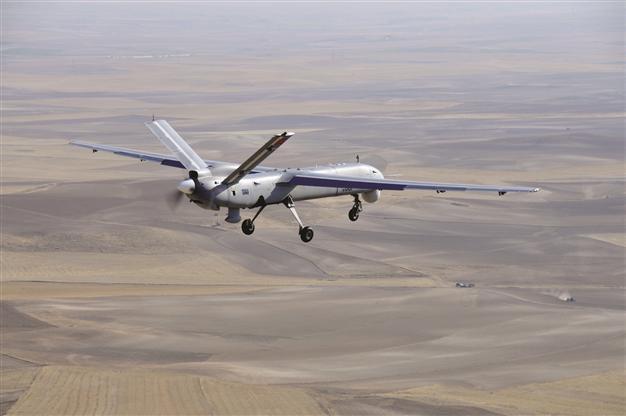China’s buying of German firm risk for Turkish UAV
Burak BEKDİL

Turkish Aerospace Industries develops the Anka, the first indigenous UAV, which is a medium-altitude long-endurance MALE-category drone. DHA photo
It looked entirely like any other business takeover between the Chinese and Germans with no relevance to Turkey. But the news that a Chinese group had acquired the troubled German maker of aircraft engines means Turkey must now find a new engine supplier for its first indigenous unmanned aerial vehicle (UAV), the Anka.Turkish officials and the Anka team are now worried that Chinese group Avic International’s acquisition of Thielert, a bankrupt German maker of diesel engines for aircraft may further delay the Anka which would otherwise have been powered by Thielert’s Centurion engine.
Turkish Aerospace Industries (TAI) which develops the Anka had ordered the Centurion for a batch of 10 aircraft. Now TAI must look elsewhere to find a new engine to power the Anka.
The ANKA is a medium-altitude long-endurance MALE-category drone. Such UAVs usually operate for 24 hours at an altitude of 10,000 feet.
ANKA, meaning Phoenix in English, is the first MALE-type UAV to be produced by TAI. One of the prototypes crashed during a test flight in September but several other flight tests have been carried out successfully.
ANKA+, another version of the ANKA, calls for an armed vehicle, using a rocket attached to its body and sensors.
An engine maybe developed to replace
“An immediate replacement could be a difficult task,” a TAI official said. “We may, though, ask TEI (TAI’s sister company that manufactures engine parts) to develop an engine for the Anka.” Both TAI and TEI (Turkish Engine Industries) are owned by a military support fund.
The engine problem occurred at a time when defense procurement authorities are preparing to sign a contract for the acquisition of 10 ANKAs. Separately, the Turkish police force is also preparing to place an order for the Anka.
Before the engine snag, another problem had delayed the Anka program. A locally-developed electro optical sensor, by military electronics firm Aselsan, did not fit Anka’s specifications and TAI was mulling to opt for a foreign pod.
Avic said in August that it was merging Thielert into its Continental Motors division and was giving up military business. Deliveries had stopped, the state-run Chinese company announced.
Thielert was supplying engines for aircraft including a U.S. Army version of the General Atomics Predator. General Atomics has acquired the engine data package and intends to continue production and support.
Satellite-controled version of ANKA
The ANKA had successfully passed acceptance tests late in January. The final, decisive tests on Jan. 20-21 involved a full endurance, 18-hour flight, successful auto landing, data link performance at a distance of 200 km (approx. 120 miles) under winds up to 45 knots, and night take-offs and landings. The ANKA has so far did more than 150 flight hours. There is a possibility that TAI could develop a satellite-controlled version of the ANKA, company officials say.
A defense industry expert said that finding a new engine supplier may not resolve the entire problem. “Any new engine will have to be fitted into the Anka which was designed for the Thielert engine. This will require new (engine) integration work. New tests should also be done,” he said.
















